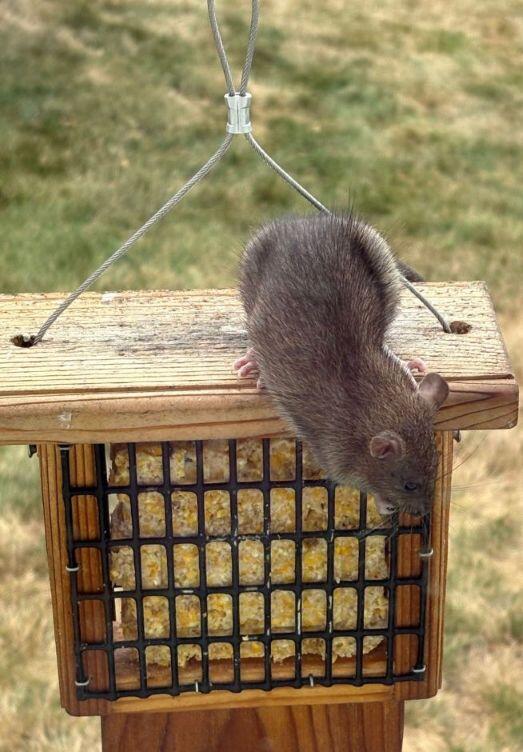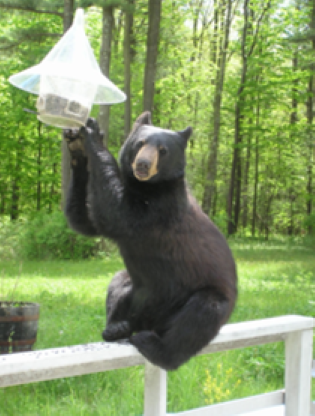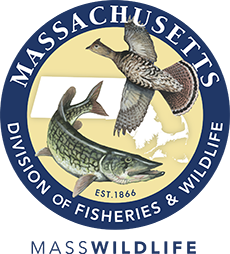- Division of Fisheries and Wildlife
Media Contact
Media Contact, MassWildlife

Over 50 million Americans purchase more than 1 billion pounds of bird seed and suet annually. Are you one of them?
You may be surprised to learn that bird feeders cause more harm than good for wild animals. While feeders have some benefits for birds, they contribute to the largest sources of wild bird mortality in North America and are a major driver of human-wildlife conflict.
Let’s be honest—bird feeders do not only attract songbirds. Small mammals, like mice, rats, chipmunks, and squirrels, are attracted to these feeding stations too. Then come the predators, like foxes, coyotes, and bobcats, all hunting those smaller animals. Wild turkeys that eat from bird feeders can become indifferent to humans and develop bold behavior towards people, causing human-wildlife conflict that can affect entire communities. Black bears will also routinely visit (and destroy) bird feeders for a quick, easy meal, even during the day. A black bear that learns to visit backyard feeders may eventually come to find a neighbor’s unprotected livestock, potentially losing its life as a farmer takes lethal action to protect their property.
Bird feeders and feeding platforms are also hotspots for disease. Many wildlife diseases, like mange and avian pox, are spread by physical contact between healthy and sick animals. Bird feeders gather animals in unnaturally high concentrations, creating a place for disease to spread quickly and cause greater harm.
Seeing birds and other wildlife use your yard can be exciting. However, it’s up to us to make daily choices that help, and not harm, the animals we care so much about. Ease into your bird feeder breakup by taking down feeders and growing native plants, trees, and shrubs instead. Generally, hummingbird feeders cause less human-wildlife conflict, so you can continue to use those unless you start to see unexpected animal visitors. Attract songbirds with a source of water like a birdbath or fountain, making sure to replace the water weekly to keep it clean. If you have a cat, keep them indoors or directly supervise them whenever they’re outside to prevent them from hunting and killing songbirds and small mammals. And don’t be fooled into putting bird feeders out only during the day or winter—they will alter wildlife behavior and spread disease year-round, day or night.
Like any breakup, you might feel sad at first about cutting ties with your bird feeder. But with some time and willingness to support local wildlife in new ways, you may start to realize that you and your wild neighbors are better off without them anyways.
Learn more about creating a bird-friendly backyard without bird feeders.


